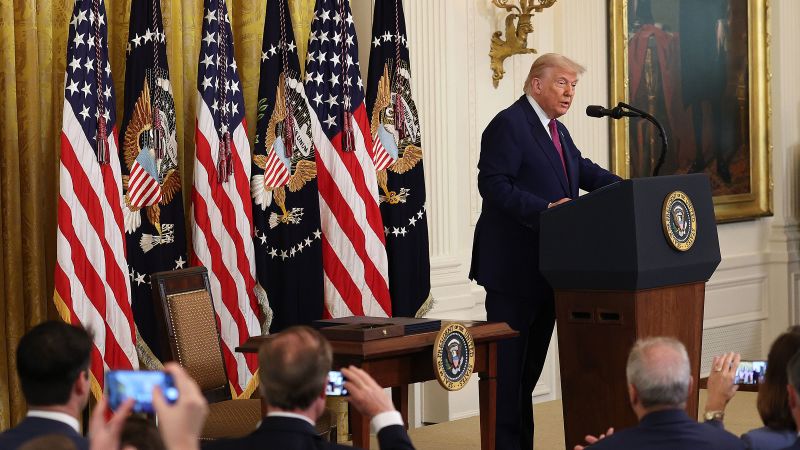On a significant Thursday, President Donald Trump expressed his concerns regarding the increasing tensions in the Middle East, warning of a potential “massive conflict” that could arise shortly. This alarming statement comes amid escalating tensions between Israel and Iran. The White House, reflecting the gravity of the situation, has ramped up its assessments on security conditions in the Middle East, underscoring the fears of a looming military confrontation.
The backdrop to Trump’s warning involves rising apprehensions among U.S. officials, shaped by recent actions from Tehran. Iran has announced its decision to advance its nuclear capabilities following a resolution from the International Atomic Energy Agency (IAEA). This resolution indicated that Iran was not complying with its nuclear non-proliferation obligations. Senior U.S. officials conveyed to CNN that these developments have heighted fears that Israel might strike Iran in response to these provocations.
When questioned about the possibility of an Israeli military strike, Trump showed a cautious determination, emphasizing that such an action “could very well happen.” His comments underline the precarious nature of the geopolitical landscape, suggesting that a military escalation is not just a possibility but a plausible scenario. “I don’t want to say imminent, but it’s something that could very well happen,” Trump told reporters during his press conference at the White House, further highlighting the potential for fast-moving developments in the region.
In light of the escalating threat environment, U.S. embassies throughout the Middle East conducted emergency action assessments. These assessments aim to evaluate the risk level and ensure the safety of American personnel and citizens. As part of this ongoing process, U.S. officials remain vigilant, taking stock of any emerging threats and determining appropriate responses. The ongoing monitoring indicates a serious commitment to elucidating the current dynamics within the region.
During the press conference, Trump was asked about the specific communications he received from Israeli officials which prompted the evacuation of U.S. personnel. His response was notable: “They didn’t tell me anything, but I said look, there’s a chance of massive conflict,” revealing his proactive stance in viewing the unfolding events. This comment suggests an underlying sense of urgency amid the uncertainty enveloping U.S.-Israel relations and broader regional stability.
Trump elaborated on the intense deliberation that guided his decision to recommend the evacuation of American personnel from the volatile areas. He stated the responsibility he felt towards the safety of Americans abroad, emphasizing, “We have a lot of American people in this area, and I said, look, we gotta tell them to get out ’cause something could happen – soon.” His remarks point towards a complex balance between risk management and the desire to protect lives amid mounting danger.
Moreover, the president asserted that he does not wish for Israel to attack Iran as negotiations for a renewed nuclear agreement continue. With discussions for a potential deal set to resume in Oman, Trump expressed hope that diplomatic solutions could be realized instead of military ones. “I want to have an agreement with Iran. We’re fairly close to an agreement,” he remarked, indicating optimism regarding the negotiations despite the surrounding tension.
Ultimately, while the tension in the Middle East continues to escalate with warnings of possible hostilities, the approach from the Trump administration appears to focus on a dual strategy—maintaining vigilance on threats while simultaneously hoping for a resolution through diplomatic means. The weighing of military action against the possibility of negotiation encapsulates the complex tapestry of international relations, particularly in a region marked by historical conflicts and persistent geopolitical stakes. The unfolding events will undoubtedly continue to attract the attention of global leaders and analysts alike as they shape the future of U.S. policy in the Middle East.



